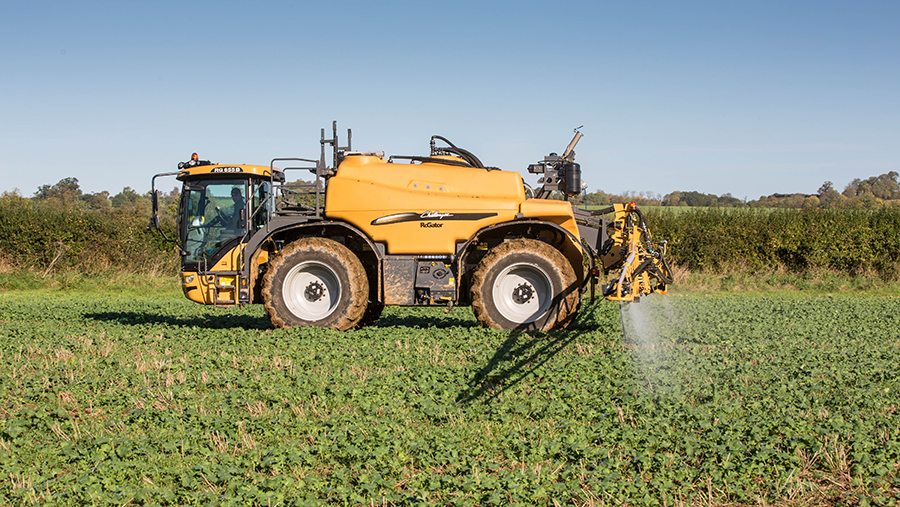OSR peak phoma spray predicted as mid-October
 © Tim Scrivener
© Tim Scrivener The AHDB phoma leaf spot forecast suggests many oilseed rape crops could reach the spray threshold for the disease in the next few weeks.
The online forecast uses rainfall and temperature information to estimate when 10% of oilseed rape plants may develop phoma leaf spot symptoms at a number of sites across Great Britain.
The guidance is to treat varieties with relatively low stem canker disease resistance ratings, of 7 and below on Recommended List (RL) when crops are small with 10-20% tonnes of plants developing phoma leaf spots.
See also: How to make the most of phosphate fertilisers this autumn
More than half of the sites across the country are forecast to reach the 10% threshold during a two-week period in October (12 to 25 October).
The forecast predicts a spread of dates, so it is important to monitor crops to decide individual field-level risk.
The forecast’s main strength is to show the overall trend, with the distribution of forecast dates similar to last autumn.
A few sites, mainly located towards the South West, have already passed the earliest threshold dates.
Some sites do not reach the threshold until November. These are mainly located towards the North East.
Sacha White, lead crop protection scientist at the AHDB, says:
“The forecast mainly considers temperature peaks and dampness from mid-summer to early autumn (15 July to 26 September), because warm and wet conditions favour phoma development.
“Although summer was dry, it was the warmest on record and the more recent showers will have encouraged disease progression.
“As a rule of thumb, symptoms show on infected leaves after at least 20 rainfall days in August and early September.”
Most RL 2025-26 OSR varieties have moderate levels of resistance to phoma stem canker (disease ratings 5, 6 or 7), with some even more susceptible to the disease.
These should receive prompt treatment when the 10% threshold is reached.
According to the AHDB Planting and Variety Survey, some of the most widely planted oilseed rape varieties have a stem canker resistance rating below 7.
Some hybrids have high levels of resistance (disease ratings 8 or 9), and these may not need a phoma treatment, unless the higher 20% threshold is exceeded.
The effectiveness of products against stem canker on susceptible OSR varieties has been evaluated as part of the AHDB fungicide performance project for more than a decade.
Well-timed spray
Results show that two well-timed sprays at half the recommended label rate can deliver good control. The second application should be considered when re-infection appears.
This is typically four to 10 weeks after the first application.
Potential phoma control from a spray targeted at light leaf spot – usually in November – also needs to be considered in the overall fungicide programme.
The Fungicide Resistance Action Group has cited reports of decreased sensitivity to azole (DMI) fungicides in some phoma populations in western Europe, including in the UK, as well as other countries.
There are several modes of action that control phoma leaf spot and stem canker, which include azole and non-azole options.
The AHDB says modes of action should be used alternately, or as mixtures or co-formulations, across the fungicide programme to minimise resistance risks, along with an appropriately low dose.
All modes of action also offer protection when applied prior to infection.

